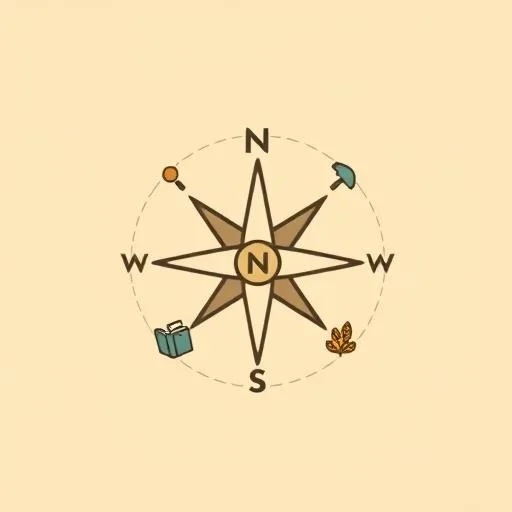
One sparkly September morning I’m squatting near the sandbox, watching a swarm of kids turn a fallen branch into a “space rover.” Same afternoon I’m on a video panel—engineers half a world apart—gushing how AI now spins up dull code so they can chase the juicy “why.” My brain lit up: their playbook is our playbook. Let me explode this for you—engineers aren’t threatened by AI; they’re dancing with it. And that dance hands us parents a cheat-sheet for raising humans who thrive wherever tech sneaks in next.
How Does AI Teaming Offer Parenting Insights for Future-Ready Kids?

Picture a junior coder staring at a blank screen. Old days? Cold sweat. Now they open ChatGPT, whisper what they need—bam—starter code appears. But here’s the twist no headline shouts: they never paste blindly. They poke, prod, swap variables, trash half the suggestions, argue in team chat, and finally ship something sturdier. Translation? Let the robot carry the grunt work, force the human to own the judgment.
Same scene at homework time. Kid yells, “Siri, what’s 8×7?” You could grumble about cheating—or high-five the future. Try: “Cool, Siri says 56. How could we prove she’s right?” Suddenly the kid invents arrays of blocks, groups of donuts, jumps on the couch eight times—they’ve just debugged an AI answer. Researchers at Stanford clocked engineers saving 35 % churn time this way; our living-room version saves whining time and coats the fact in unforgettable story. Win-win.
Why Is Critical Thinking the Unshakable Skill No Algorithm Can Replace?

Ready to blow your mind? The real magic isn’t the answer—it’s the questions after. Engineers guard a sacred step nicknamed “code review.” Machines spit lines, humans squint, ask “what if,” catch nonsense. Kids need the same guardrail, but we coat it in play.
Last week my seven-year-old streamed a cartoon volcano. Instead of zombing out, she paused—eyes wide—and asked, “But lava melts metal, why doesn’t it melt the volcano lip?” We Googled, sure, but first we hypothesized: Maybe the rim is colder? Maybe lava cools fast? We scribbled crayon cross-sections, raided the kitchen for baking-soda magma, and—you know how it goes—made a righteous mess. The eruption covered the table; the excitement covered us. That night she slept clutching a hand-drawn “lava-cooling patent.” No worksheet demanded it; curiosity did.
What’s the Hidden Cost When Tech Steals Spontaneous Connection?

Here’s the gut-check. One senior dev admitted he pings AI for quick fixes he used to ask the teammate beside him. Answers come faster; hallway talk dies. Translation: knowledge grows, but team glue thins. Sound familiar?
Kids reach for tablets the instant playground energy dips. swipe-swipe—boredom solved, but missing the awkward ten seconds that once birthed tag, pretend markets, or let’s-build-a-clubhouse moments. Empathy needs those blank beats.
So we run a tiny experiment: one “boring gap” per day. After school we sit on the front steps—no snacks, no phones—just birds and sky. First day: foot-shuffle festival. Second: she starts counting cloud shapes. Third: neighbor kids drift over, and suddenly four seven-year-olds are negotiating a leaf-currency economy. Trust me on this, the magic still boots up—it just needs idle time to load.
How Can We Raise Hopeful Navigators, Not Passive Users?

Back to the pros. They don’t slap AI on every crisis; they frame rules: never ship without peer review, never feed customer data to public models, always log who changed what. Hope anchored in guardrails. We can copy-paste that ethic at home.
Let kids explore—AI comics, voice-powered story games—but tag in real-world ballast. After she generated a robot fairy-tale, we printed the nonsense text, grabbed scissors, and rebuilt the plot into a zine, glue sticks everywhere. Digital seed, analog fruit. Balance isn’t 50-50; it’s a heartbeat—digital inhale, human exhale.
Weekends we hike mini-trails, spotting mushrooms, mapping puddles. She records frog sounds on the tablet, then sketches habitats at bedtime. No grades, no flash cards—just the thrill of documenting her world. That combo—tool in hand, dirt under nails—writes resilience into muscle memory.
So while headlines scream disruption, I see kids who’ll treat AI like we treat electricity: powerful, essential, yet obedient to the switch they control. Our job? Hand them the switch early, then walk beside them as they decide when to flip it on—and when to run outside and chase the moonlight instead.
Source: Article: Virtual panel: How software engineers and team leaders can excel with artificial intelligence, InfoQ, 2025/09/05 09:00:00
